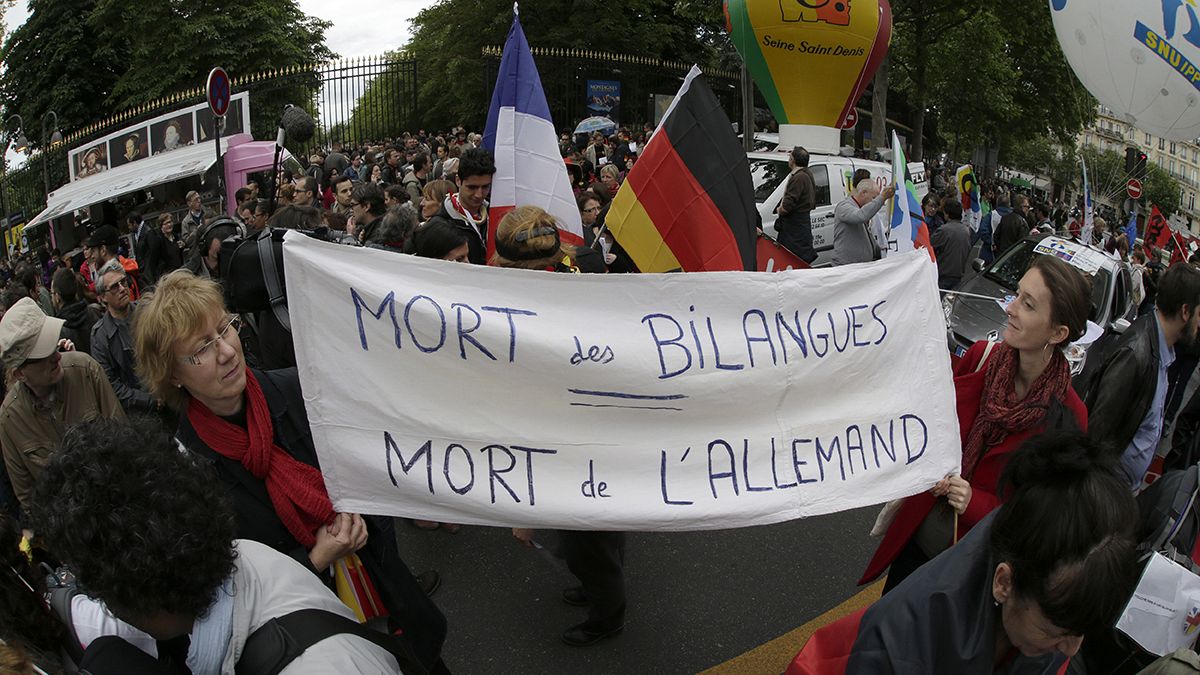Luxembourgers are the multilingual champions of the EU while the Irish, Bulgarians, Austrians and Hungarians are among the worst, latest official
Luxembourgers are the multilingual champions of the EU while the Irish, Bulgarians, Austrians and Hungarians are among the worst, latest official data has revealed.
All students at lower secondary school level in landlocked Luxembourg are learning two or more ‘foreign’ languages, according to Eurostat figures.
Four-fifths or more of language pupils at the same level in Ireland, Bulgaria, Austria and Hungary are studying just one additional tongue.
No figures were available for the United Kingdom, which has been accused in the past of failing to produce enough people with foreign language skills.
Other trends to emerge include:
- 89.7 percent of lower secondary level pupils in Ireland learn a foreign language, the lowest in the EU.
- All students at this grade in Denmark, Greece, Spain, Italy, Luxembourg, Malta, Slovenia and Sweden learn at least one foreign language.
- Belgium and Luxembourg are the only countries in the EU where English is not the most common ‘foreign’ language studied.
- English is the most common foreign language, followed by French, German and Spanish.
- Russian is the only non-EU language to make the list of commonly-studied second foreign languages.
Is Luxembourg an anomaly?
There is little doubting the prowess of Luxembourg when it comes to languages, but its figures are helped by Eurostat’s interpretation.
The country has three official languages: Luxembourgish, French and German. Children from primary school age are taught all three.
But despite this, Eurostat still counts French and German as ‘foreign’ languages.
A survey in 2011 showed Luxembourg was the only EU state where more than half of those questioned claimed to be able to speak three languages or more. Nearly three-quarters of adults (aged 25-64) questioned said they were multilingual, while 22 percent declared they were bilingual.
Who are the ‘polynots’ of the EU?
The vast majority of pupils – eight out of ten or more – at lower secondary school level in Hungary, Bulgaria, Austria and Ireland were studying just one foreign language in 2014, the latest year for which figures are available.
This is out of keeping with the rest of the EU, where 59.9 percent of language learners at lower secondary level are studying two languages or more.
Hungary, Bulgaria and Ireland’s language woes are backed up the 2011 survey.
In Bulgaria 61 percent of respondents said they spoke no foreign tongues; the corresponding figure for Ireland was 72.7 percent and Hungary 63.2 percent.
But Austria fared better, with just over one fifth of those questioned saying they were unable to speak a foreign language.
Bulgaria contrasts starkly with its neighbour Romania, where 95.6 of language learners at lower secondary school level are studying two or more languages.
What are the most popular foreign languages?
English continues to dominate, with 97.3 percent of lower secondary school language learners studying it in 2014, up from 96.7 percent two years earlier.
French is the next most studied (33.7 percent, -0.4 from 2012), followed by German (23.1 percent, +1.0) and Spanish (13.1 percent, up 0.9).
Russian is the only commonly studied non-EU language. It’s the second foreign language studied, after English, in former Soviet states Estonia, Latvia and Lithuania.
Around 500,000 lower secondary level students study Russian in the EU, with numbers increasing in Finland, Slovakia and the Czech Republic, but decreasing in Lithuania, Latvia and Poland.
